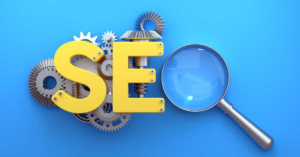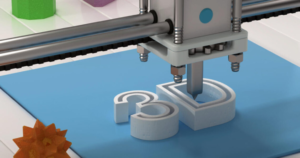SEO is a cost-effective marketing strategy that generates qualified leads for your business. It also delivers a better return on investment than many other marketing strategies.
Keeping up with the latest SEO news, research, and best practices is important. It’s also helpful to read SEO blogs and attend SEO conferences regularly. Click https://www.rankboss.com/ to learn more.

SEO is a cost-effective marketing strategy that is a top choice for businesses on tight budgets. It offers better value than other tactics, such as pay-per-click advertising and social media marketing. However, it is important to understand that SEO is costly. There are upfront costs involved in creating content, technical work, and hiring professionals to help.
However, the long-term benefits of SEO are worth the investment. It can lead to higher traffic, increased brand visibility, and more revenue. In addition, SEO can reduce your customer acquisition cost (CAC), which is the average amount you spend to acquire a new client or customer. Increasing your website’s visibility and traffic can significantly lower your CAC, which is especially important for small businesses.
Unlike PPC, SEO is an organic strategy that takes time to produce results. Its focus is on optimizing titles, descriptions, and keywords to improve the click-through rate and overall user experience. It also includes analyzing user behavior and adjusting website content to make it more relevant to the searcher’s needs.
It also incorporates technical SEO, which ensures that websites meet standard web usability and accessibility criteria. This includes ensuring that pages are properly indexed by search engines, implementing proper page speed, and making sure websites are mobile friendly. Finally, it involves enhancing the structure of a website by using headings and subheadings, removing duplicate content and internal links, and incorporating proper metadata.
SEO is one of the most cost-effective digital marketing techniques, but it’s not a magic bullet. It’s crucial to have a well-defined plan and execute it consistently to see results. In addition to SEO, there are several other digital marketing tools that can help you achieve your goals.
While it’s easy to confuse SEM with SEO, they’re actually different marketing strategies. SEM is a paid search, while SEO is organic, and both offer unique advantages. SEM can be used as a complement to your SEO strategy to drive immediate visibility and traffic, but it’s best to focus on SEO for the long term. It will save you money in the long run and deliver a higher ROI than paid search advertising.
Increased website traffic
One of the key benefits of SEO is increased website traffic. This traffic can lead to new clients, leads and sales. SEO can also be used to increase brand awareness and visibility on social media platforms. In addition, increased website traffic can result in improved search engine rankings, which can be very beneficial for small businesses that are trying to improve their online presence.
Another way to boost website traffic is by creating content that is both informative and useful. This can be done by conducting keyword research and writing high-quality, original content. The content should focus on topics that are relevant to the target audience’s needs and concerns. The content should also be shareable, which can help increase the number of people who visit a site.
Lastly, it is important to keep track of website traffic and user behavior. This can be done by using tools such as Google Analytics to analyze website performance and visitor data. By analyzing these metrics, you can make data-driven improvements to your site’s SEO strategy and increase your website’s visibility.
The process of increasing SEO traffic is a continuous process that requires ongoing monitoring and adaptation to algorithm updates. However, the benefits of this strategy are long-term and can provide a strong foundation for a business’s online success.
In order to maximize the impact of SEO, it is important to develop and implement a comprehensive digital marketing strategy. This includes SEO, SEM, and PPC. This strategy will help you achieve your goals and grow your business. The main goal of SEO is to help businesses attract more organic traffic through search engines. This can be done by focusing on the right keywords and by optimizing a website’s structure and design.
SEO can also be used to optimize a site for mobile devices. This involves making sure that the website is optimized for mobile browsing and loading speeds, as well as including navigational features such as a mobile-friendly site map and XML sitemap. It is also helpful to include long-tail keywords in your content, as these keywords are less competitive and can drive more targeted traffic.
Insightful data analysis
Whether you are an SEO agency looking to maximize the value of your clients’ SEO campaigns or an individual who wants to boost their online visibility, you must understand how search engines work to get the most out of them. The process of SEO is complex, and it takes time to see results. That is why it’s important to track and analyze SEO data in order to improve your rankings and make informed decisions about how to enhance your website.
One of the most effective ways to improve your SEO performance is by leveraging predictive analytics. This analytical tool uses historical data to predict the future performance of keywords. It also helps you identify potential risks and opportunities that will impact your ranking performance. This helps you determine the best keyword strategy to improve your site’s organic search engine traffic.
In addition to identifying keyword performance, predictive analytics can also help you understand user intent. Using this information, you can optimize your website content to match your audience’s needs. This will lead to improved organic search engine performance and higher conversion rates.
Another useful feature of predictive analytics is its ability to detect patterns in your competitor’s content. Detailed competitive analysis can help you find the best way to differentiate your content from your competitors’. This can be done by analyzing keywords and finding patterns that resonate with your audience. You can also use this information to develop your own unique voice and tone.
You can also improve your SEO performance by monitoring algorithm changes and adjusting your tactics accordingly. Keeping an eye on SEO trends will help you keep pace with current tendencies and ensure that your strategies are aligned with the latest SEO guidelines.
In addition, you can compare the performance of your pages on different search engines to measure their visibility. This can be done with tools like SEOquake, a free Google Chrome extension that provides on-page and off-page SEO audits and links analysis. This tool also has a goal widget, which allows you to set and track SEO goals for each page. Another tool, Whatagraph, is a comprehensive SEO reporting dashboard that connects to popular platforms like Google Analytics and SEMrush. Its SEO reports include a comprehensive site audit, competitor analysis, and backlink profile analysis.
Tracking results
SEO is a complex process, and it’s important to track your progress so you can improve and optimize your campaigns. Luckily, there are many tools available to help you do this. These tools can range from free to highly sophisticated and provide valuable insights into your SEO performance. They can also automate your tracking and reporting processes, making them even more efficient. These tools include all-in-one SEO platforms, as well as individual SEO tools and software.
One key metric to track is organic search impressions. These are the number of times your website appears in SERPs for a certain keyword. You can get this data from Google Search Console, and you can see it on a page-by-page basis. A rising number of organic search impressions is a sign that your SEO strategy is working.
Another key metric to track is click-through rate (CTR). CTR indicates how effective your SEO strategy is in getting people to click on your content. You can measure CTR with Google Analytics or any other Web analytics tool that supports UTM parameters. You can also track conversions to see how your SEO campaign is performing.
The last metric to track is your SEO ROI, or Return on Investment. This metric determines whether your SEO efforts are worth the money you’re spending on them. To calculate ROI, you’ll need to know your costs and the total value of each conversion.
Once you’ve established your KPIs, it’s time to find the right tools to track your results. There are many tools on the market, but not all of them are created equal. Some tools are all-in-one solutions, while others focus on a specific aspect of SEO, such as keyword ranking, link building, or competitor research. Some are even customizable to meet your specific needs.
Using the right tools can make all the difference in your SEO success. The best tools are flexible, comprehensive, and easy to use. They should provide a clear overview of your performance, as well as detailed data for each aspect of your SEO strategy. There are several free and paid tools to choose from, including Google Search Console, Semrush, and Ahrefs. Many of these tools can integrate with one another, streamlining your SEO workflow and presenting your data in a visually-pleasing format.




